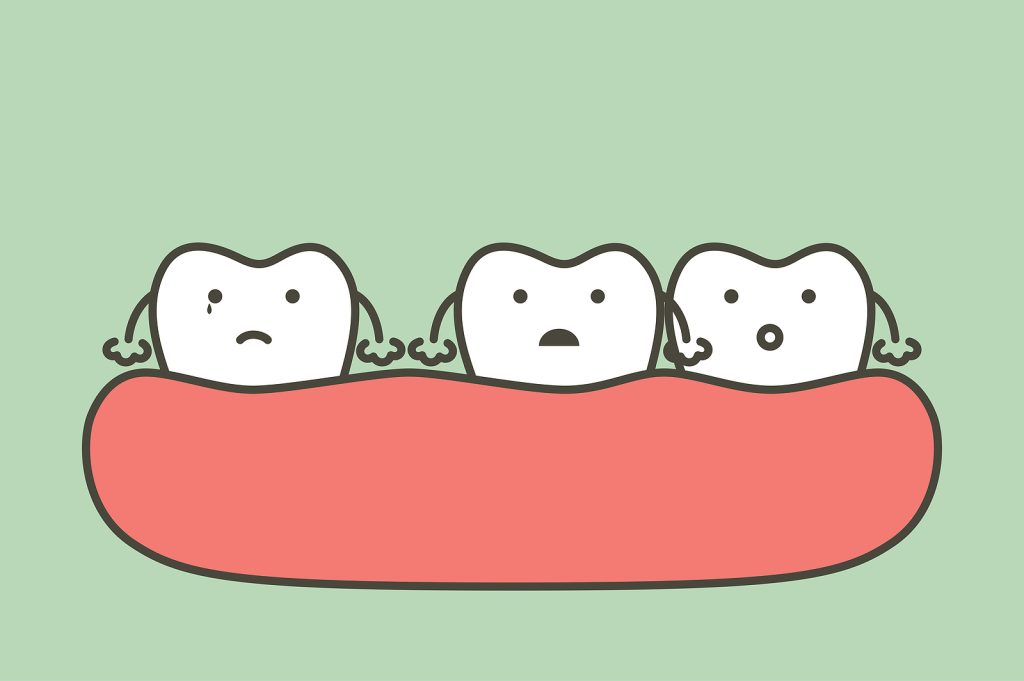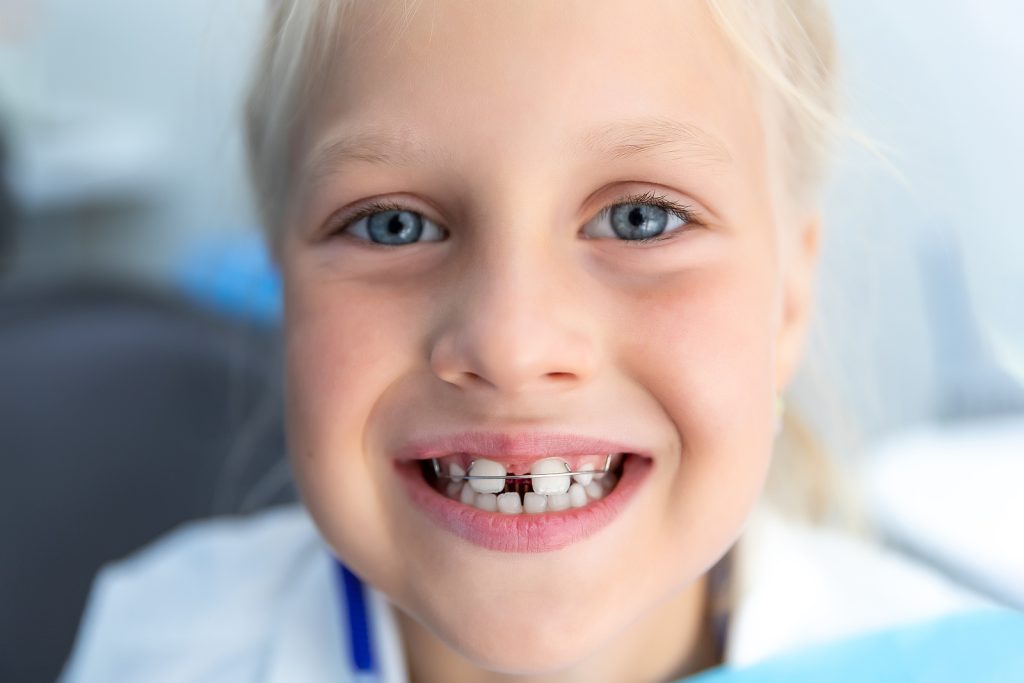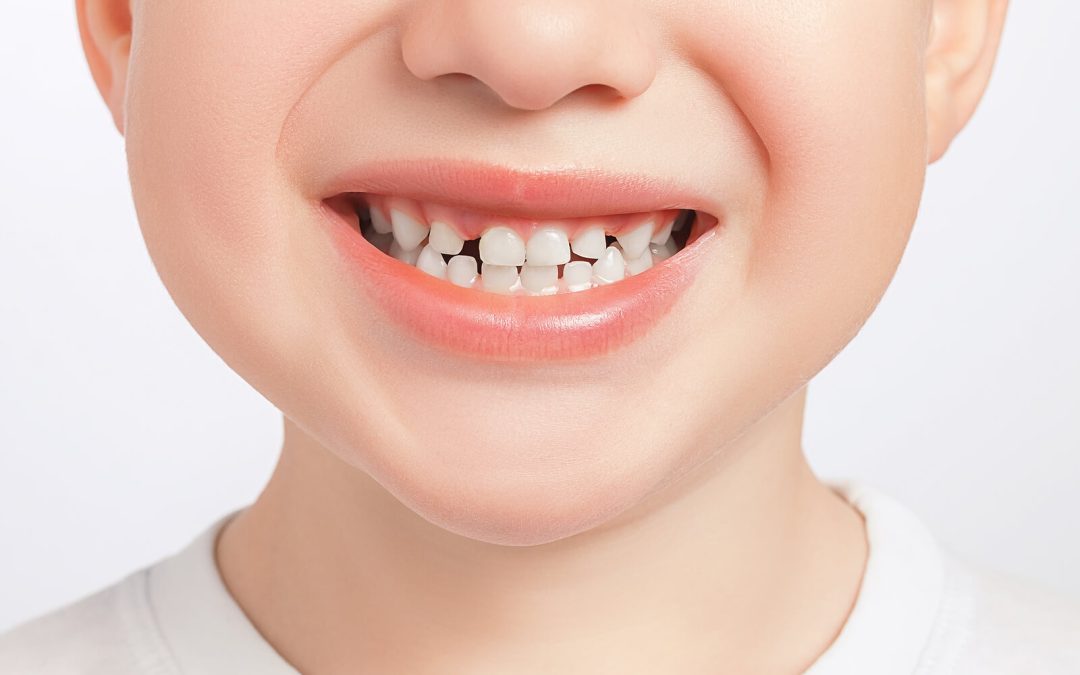Diastema is a small or large gap between teeth in the mouth. Excessive spacing can occur in many areas of the mouth but larger gaps between the front teeth are the most common type of diastema, for which people may choose to pursue several treatment options. The diastema may not require dental treatment for health reasons and in many cases treatments are purely aesthetic.
What Causes the Gaps Between Teeth?

There are many different potential causes of diastema, some of which are preventable and others that you will not be able to avoid. The most common causes of large or small gaps between teeth are usually one or more of the following:
- Genetics: You cannot escape your genetics, which is a big factor in the likelihood of developing diastema. Tooth gaps may run in families, as may a variety of other dental and non-dental issues. Some people only have a gap in childhood as teeth develop.
- Periodontitis: Periodontitis, or gum disease, can occur as a result of poor oral hygiene. Unhealthy gum tissue can cause gum recession, which can then expose dark spaces between teeth below the gum line. Periodontitis is a preventable cause of diastema.
- Problems in tooth development: Certain childhood habits, injuries and dental issues that cause you to lose teeth during early and late childhood can cause a gap between teeth. For example, hyperdontia, or extra teeth, can mean teeth change their position.
It is normally possible to fix most gaps between the teeth. If you wish to discuss orthodontic treatment to close the gaps in your teeth, we offer many safe options for nervous patients at our clinic. You will see that our friendly team is happy to help when you get in touch for an appointment.
How to Fix a Space Between Your Teeth and FAQs

People should realise that in some cases, such as where genetics is the cause, there may be no reason to treat the diastema. In children there are also some preventative methods to avoid the chances of diastema developing. Below are some potential treatments for diastema:
- Treat gum disease: Gum disease can cause gum and bone loss, which can make gaps form or become visible. Advanced gum disease may require gum grafts, jaw surgery or other treatment to control the disease. You can prevent gum disease with oral care.
- Get braces: Fitting metal braces or Invisalign orthodontic devices can close the gaps between front teeth, or any other teeth in the mouth. Braces are a good option for crooked teeth and very large gaps, but large diastema may open up again years later.
- Try counselling: Many diastemas do not present any health concerns. Psychological counselling can be a good option to avoid unnecessary treatments. Counselling or therapy can boost confidence, reduce anxiety and lower stress caused by a diastema.
- Embrace the gap: Lots of people choose to embrace the space between front teeth. This can take strong self-esteem, but if your upper lip does not tend to rise very high above the tooth or gum line while smiling, many people will not even notice.
- Dental crowns: If the gap is caused by a missing tooth, such as through injury, then applying dental crowns in a process called dental bonding can treat the issue. Using tooth-coloured composite resin crowns will make new teeth look completely natural.
- Prevent thumb sucking in children: Lots of the time a diastema in childhood can be prevented by avoiding habits such as thumb sucking, which puts a lot of pressure on developing teeth. Parents can try methods like finger guards and bitter nail polishes.
- Prevent tongue thrusting: Another habit that can cause diastema is what dentists call a tongue thrust, where the tongue pushes on the front teeth when swallowing. Speech or talk therapy may be necessary to relearn a healthy swallowing pattern.
There are plenty of preventative methods to avoid diastema, which may be a good option for parents who notice diastema in children. Oral hygiene and early treatment of dental problems can also prevent the likelihood of diastema becoming problematic – or even forming at all.
Exceptional dental care in the centre of Brighton & Hove
Located in the heart of Hove, we pride ourselves on our excellent level of service and our unparalleled attention to detail and exemplary staff who will ensure you get the very best dental care available. Our dental services are second to none and will leave you with a smile on your face.
Almost all my teeth have gaps, can braces fix spaced teeth?
Yes. Braces and other safe teeth straightening treatments can fix spaced teeth, crooked teeth and other issues that occur during development or through force of habit. Braces are excellent because they are simple and have effective results. One caveat to remember about trying braces for a diastema is that gaps may recur after braces are removed, so a retainer may be required.
Is diastema a disease?
Diastema is simply a medical term for a gap between the teeth; it is not a disease or deformity per se. However, sometimes people will experience a diastema as a result of disease, notably periodontitis, so this may be a source of some confusion. Certain habits can be a cause of diastema too, so psychological illnesses can arguably be another cause of diastema.
Can diastema fix itself?
A childhood diastema can fix itself, which is very common as teeth develop. High percentages of children have a diastema; studies vary but some sources say the rates of diastema in children can be as high as 50%. However, in adults, the position of your teeth are unlikely to change much. Adults may be able to prevent diastema as the result of gum disease through oral care.
Are gaps in teeth attractive?
Many people consider gaps in teeth to be attractive, natural and otherwise appealing. Often, perfectly straight teeth or overly-whitened teeth can seem off-putting. As a result, teeth with natural imperfections often make for very distinctive features. Celebrities such as Madonna, David Letterman and Eddie Murphy have all chosen to embrace the gap in their teeth.

Find the Right Diastema Treatments
You can book an appointment to discuss the best treatment options for diastema in the Brighton and Hove area at our advanced clinic, where we carry out a range of dental treatments and offer special support available for nervous patients. We offer many safe restorative services.
We hope you understand what causes excessive spacing or small gaps between teeth and how to fix them both a bit better now. If you have any questions about the cosmetic dental treatment options we offer, please feel free to get in touch with us to book an appointment today.
01273 900933
hello@hovedentalclinic.co.uk
Mon – Fri: 8:30 – 18:00
Sat: By appointment only
Sun: Closed





















